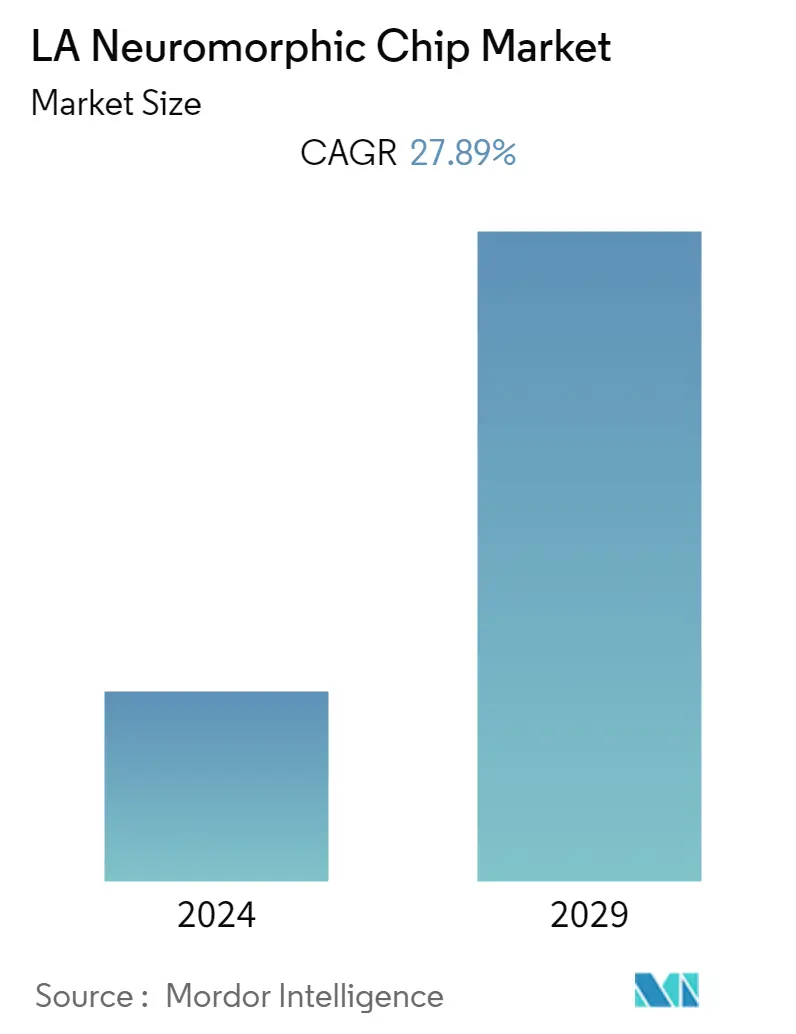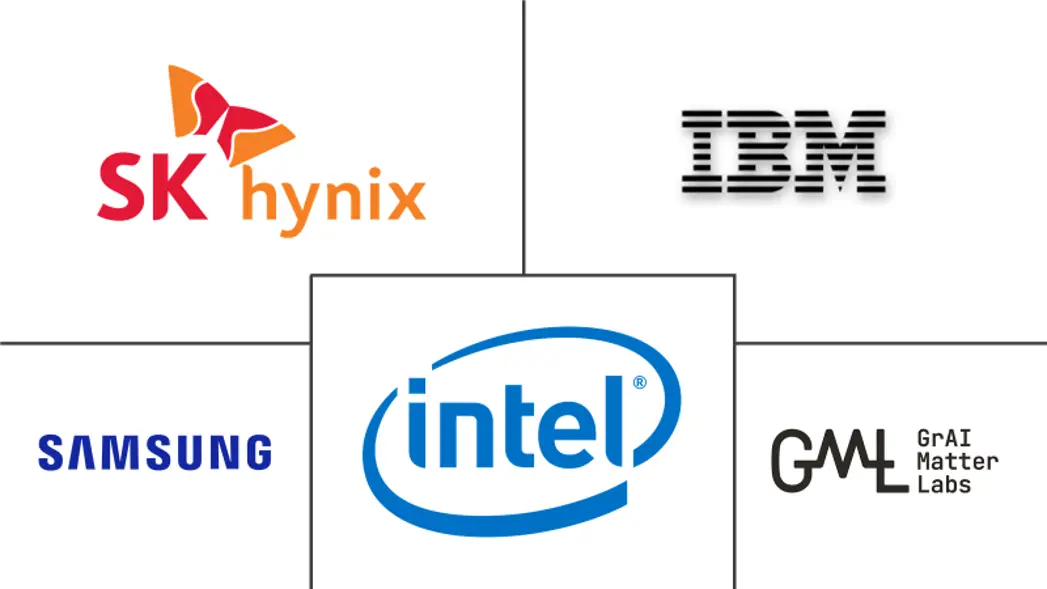Market Size of LA Neuromorphic Chip Industry

| Study Period | 2019 - 2029 |
| Base Year For Estimation | 2023 |
| Forecast Data Period | 2024 - 2029 |
| Historical Data Period | 2019 - 2022 |
| CAGR | 27.89 % |
| Market Concentration | Medium |
Major Players
*Disclaimer: Major Players sorted in no particular order |
Need a report that reflects how COVID-19 has impacted this market and its growth?
Latin America Neuromorphic Chip Market Analysis
Latin America's neuromorphic chip market was valued at USD 0.19 billion in 2020 and is projected to reach USD 0.83 billion by 2026, at a CAGR of 27.89%. The demand for neuromorphic chips increases with the mounting demand for IoT and data analytics. The motivation behind designing these chips is to build a platform for running large-scale, real-time simulations to aid neuroscience research. As a result, innovation in processor architecture is being seen with more interest by governments, research institutes, and business entities, thereby evolving into significant developments.
- Neuromorphic is a specific brain-inspired ASIC that implements the Spiked Neural Networks (SNNs). It has an object to reach the massively parallel brain processing ability in tens of watts on average. The memory and the processing units are in single abstraction (in-memory computing). This leads to the advantage of dynamic, self-programmable behavior in complex environments.
- Companies, such as BrainChip Holdings Ltd, are forming multiple partnership activities to utilize neuromorphic chips in curbing the spread of COVID-19. In May 2021, BrainChip Holdings Ltd partnered with precision immunology company Biotome Pty Ltd to develop a fast, accurate COVID-19 antibody test. The companies will explore how the Akida neural processor could improve the accuracy and information quality of the antibody tests while Biotome is developing by providing advanced AI capacity at the point of care.
- Neuromorphic chips can be designed digitally, analog, or in a mixed way. Analog chips resemble the characteristics of the biological properties of neural networks better than digital ones. In the analog architecture, few transistors are used for emulating the differential equations of neurons. Therefore, theoretically, they consume lesser energy than digital neuromorphic chips. Besides, they can extend the processing beyond its allocated time slot. Thanks to this feature, the speed can be accelerated to process faster than in real-time. However, the analog architecture leads to higher noise, which lowers the precision.
- Digital ones, on the other hand, are more precise compared to analog chips. Their digital structure enhances on-chip programming. This flexibility allows artificial intelligent researchers to accurately implement various kinds of an algorithm with low-energy consumption compared to GPUs. Mixed chips try to combine the advantages of analog chips, i.e., lesser energy consumption, and the benefits of digital ones, i.e., precision.
- Neuromorphic architectures address challenges, such as high-power consumption, low speed, and other efficiency-related bottlenecks prevalent in the von Neumann architecture. Unlike the traditional von Neumann architecture with sudden highs and lows in binary encoding, neuromorphic chips provide a continuous analog transition in the form of spiking signals. Neuromorphic architectures integrate storage and processing, getting rid of the bus bottleneck connecting the CPU and memory.
